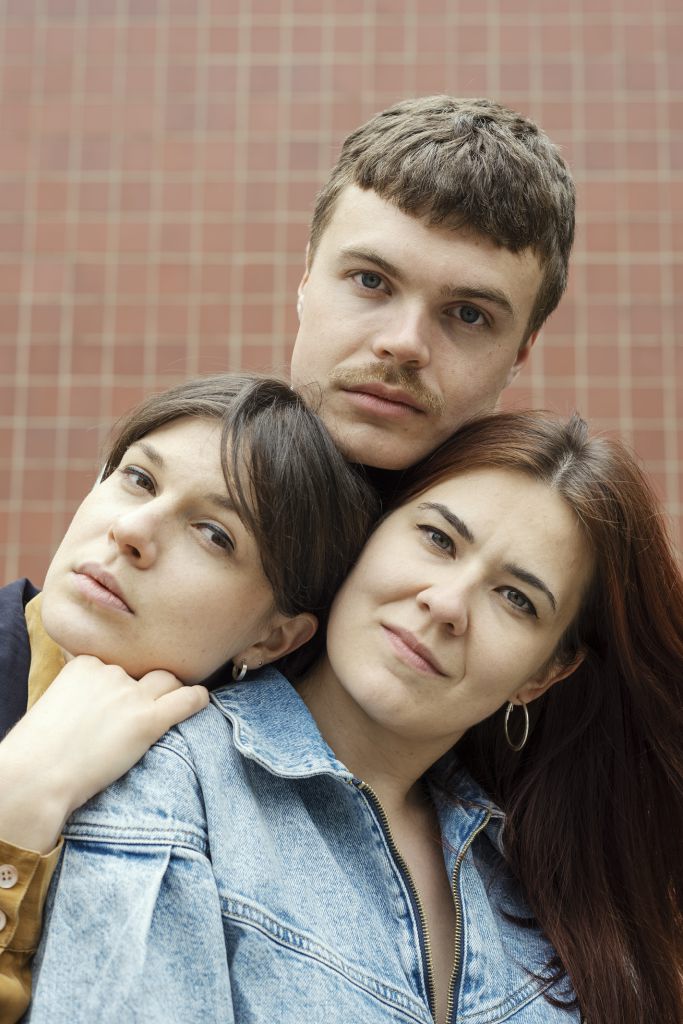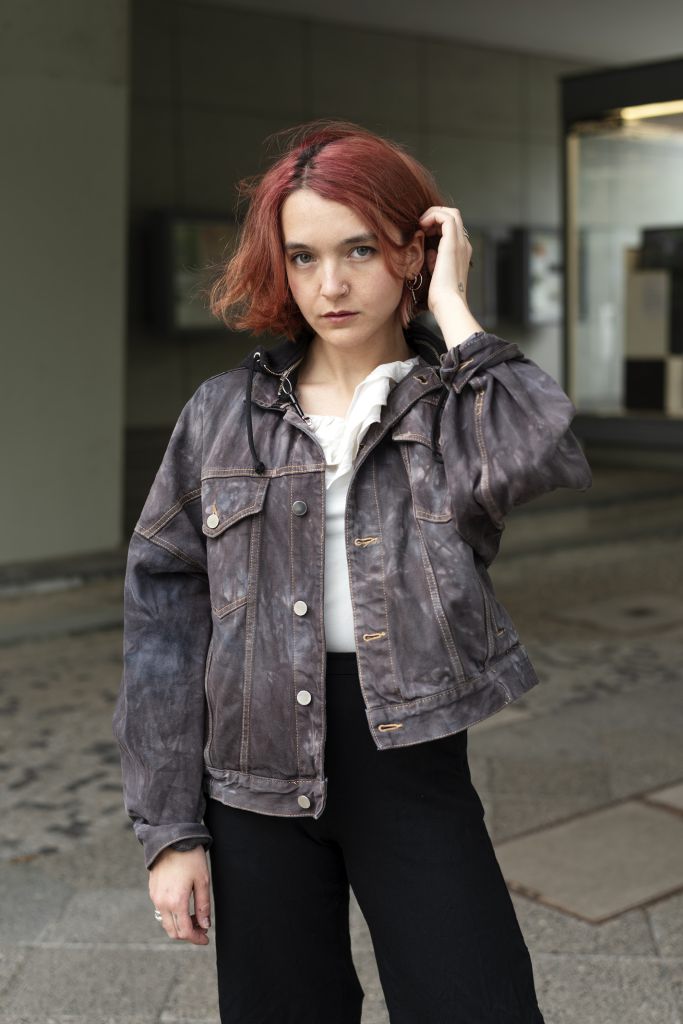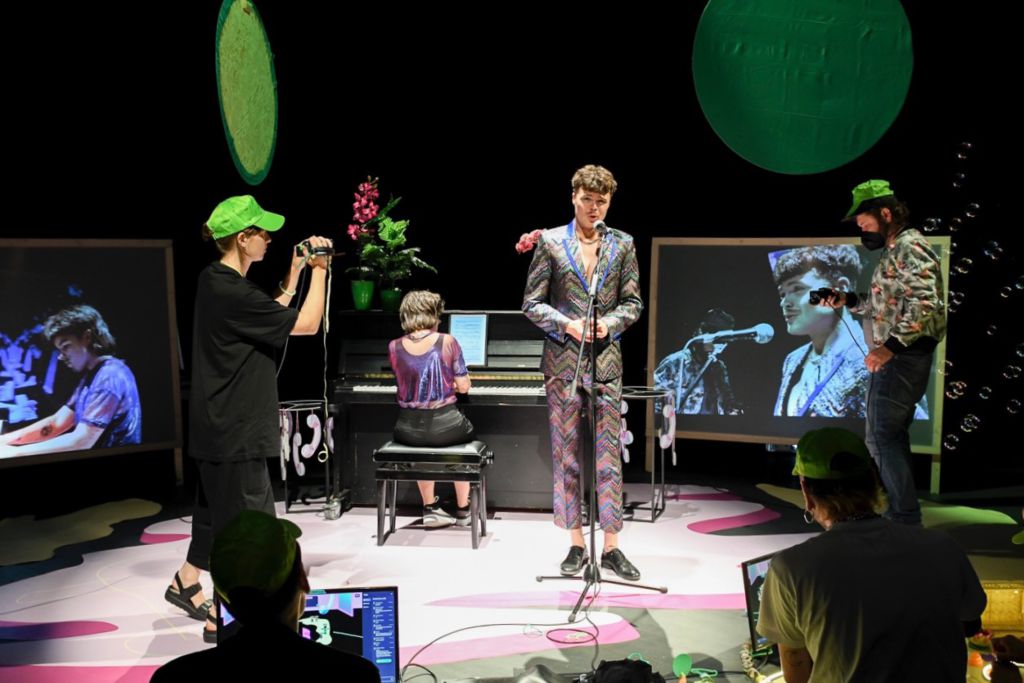Ever since their founding in early 2021, Godot Komplex have been working on new concert formats for classical music. The declared goal of this collective is to integrate the audience into the performance and enable them to experience spaces outside their view of the stage. And as the winners of the competition “Let’s Get Digital”, these dedicated artists are now taking their first step towards a hybrid concert format.

Who are Godot Komplex, and why did you decide to participate in “Let’s Get Digital”?
Hannah Baumann, oboist (HB): Godot Komplex consists of Franzi, Johannes, and myself, and we’re a concert collective that investigates things like concert formats and the audience of the future, collaborating with partners as we do so. The multimedia artist and musician Ella Estrella is someone with whom I’d already worked on artistic projects before. And when I read the call for entries, it seemed like a good opportunity to bring Ella and Godot Komplex together in order to work on developing a concept for a hybrid concert format.
At the first test run, we sat in our living rooms and just couldn’t stop grinning. We were totally captivated by this new situation.
Johannes Worms
What were your initial considerations regarding this new format?
Franziska Hiller, soprano (FH): We first began last autumn, with all of us sick of lockdowns and constant Zoom meetings. But despite the inherent drawbacks of digital interaction, we realised pretty quickly that these drawbacks weren’t what we wanted to orient our work around. What we did want to do was figure out what other perspectives we could take up, what was new and capable of enriching analogue events. In the digital era, we encounter a plurality of levels—and so we thought about how we might be able to connect them.
Johannes Worms, baritone (JW): We’re all musicians with different instruments and backgrounds, and we each asked ourselves how we could involve our respective passions and the various musical influences we’d absorbed.
Your innovative concept for Let’s play – Connection Loading won the competition. Could you describe the idea behind it?
HB: Connection is our big theme. How do I bring the analogue space into the digital? Not by way of a live stream, but in such a way that it becomes something sensuous, something to touch and experience. And the other way around, we want not just to concentrate on the digital audience but also to translate the strengths of the digital into the analogue realm.
Which means what, in actual practice?

Ella Estrella Tischa, Transmedia Directress (EET): We’ll be performing three pieces on three stages set up in the Berio Hall at the Wiener Konzerthaus, with each stage given its own theme designed to go with the music. And at the same time, we’ll be inviting our digital audience to gather.town, an online video conferencing platform where you can build virtual spaces with a gaming-style look to them—in our case, a virtual iteration of the Berio Hall.
So you’ll be digitising the Berio Hall and somehow also bringing gather.town into the realm of the analogue?
EET: Exactly. We’re planning to meld these rooms together on multiple levels. For example, the physically present audience will use hand cameras to create a concert experience for the digital audience, who will be seen in the Berio Hall on giant screens. The live videos from the hand cameras will be shown on screens physically located onsite as well as streamed on in gather.town. What’s more, audio-generative visuals—music generated in the concert hall using green screen keys—will be projected in the Berio Hall as well as in gather.town. In this case, too, the analogue and the digital space will melt together.
This concert is an absolutely pioneering project. That’s why there’s also lots of trial and error—and we’re giving ourselves the necessary leeway.
Franziska Hiller
So even though the two audiences won’t meet in the physical realm, they will come into contact with each other via the melding of the analogue with the digital?
EET: Yes—and to address the theme of contact, or of proximity and distance, we’ve also decided to include a bar-like situation at the beginning and at the end. So there will be computers onsite with webcams and barstools where the analogue audience can sit and engage with the digital audience on gather.town.
How should we imagine gather.town as being?
EET: We’re translating elements from the analogue realm, such as the colour-concept and cue states, for the gather.town environment in order to lend it a haptic quality. The participants will be able to build their own avatars, which they’ll be able to move between the spaces and use as their representatives at the concert. And a wide-angle camera beneath the large screen in the Berio Hall will invite the digital audience into the analogue space.
How will the digital audience in gather.town orient itself?
FH: We’re planning to prepare the digital audience ahead of time with a welcome e-mail and perhaps a brief introductory video.

EET: And on the evening of the concert, we’ll be giving them a guided tour. The online audience will first enter the reception area, from where they’ll be led to a tutorial room. There, they’ll receive an orientation and information about what the evening will contain. For each piece that’s performed, they’ll pass through a portal to enter a new concert hall—and at the end, we’ll provide another opportunity for exchange in the bar-situation.
You’ve talked about the stage being designed in a way that’s appropriate to the music. What works have you selected, and why?
JW: The big theme, which extends to the music, is that of connections—and hence also proximity and distance. We asked ourselves how we wanted to deal with the entanglement of these two realities. To go with that, we selected appropriate music—like Pēteris Vasks’ Pieskārieni (Touches) for oboe solo, which exploits the haptic sphere. On the other hand, we’re also playing with motifs of withdrawal and solitude, with motifs of loneliness. Beethoven’s song cycle An die ferne Geliebte (To the Distant Beloved), for example, describes how a person can be present but still absent.
EET: We’re also giving every piece an element that stands for its theme. In the case of Pieskārieni, it will be plants that produce sounds in the physical space when touched. And for An die ferne Geliebte, we decided to use old CRT televisions that will show the faces of the audience and the artists. But since this project is a very complex one both structurally and technically, there will be a need to adapt this or that thing over the course of the production process.
JW: The audience, both analogue and digital, moves from stage to stage. And with relatively short blocks of about ten to twenty minutes each plus interactive elements, we’re looking to repeatedly captivate people.
We’re aware of how now is the time to help shape something, and we hope that our project will also serve as an inspiration for others.
Ella Estrella Tischa
Where do you perceive the attractions of the digital as being, and how can they be transferred to the analogue realm?
FH: The tiled layout used on gather.town makes for a multi-perspectival view that will enable us to see everything at the same time—including the hand camera videos but also the actual audience.
EET: It’s also interesting how these hand cameras allow one to get really close to the artists from various angles.
FH: We also have the opportunity to do interactive things, here, like bridging the setup times in between with mini-games and exploratory tours on gather.town. We’d also like to transfer this interaction to the analogue concert hall, such as via the audio-generative visuals.
Sounds like a highly complex concept. How are you planning to rehearse it all?
EET: We’ve already had a few test runs; up to now, those have taken place at the Ernst Busch Academy of Dramatic Arts in Berlin, where they became part of my master’s degree project. These test runs are extremely important for the project’s overall conduct since it’s all an experimental process and also because we’d like to come into contact with the audience.
JW: Our next meeting will be in Hamburg at TONALi, where Hannah, Franzi, and I will be dealing with participative and culture-entrepreneurial aspects as well as audience development as part of its “Stage Academy” programming. And TONALi is making its concert hall available to us for an entire week, which will allow us to see what already works and where there are still points of criticism.
HB: We’ll then have two full days of rehearsals at the Wiener Konzerthaus—which is a whole lot for such a big venue. But since our project is so elaborate in a technical sense, it’s been necessary to schedule the intensive rehearsal work elsewhere. Everything will have to already be functional by the time we get to Vienna.
With Let’s Play, the mdw and the Wiener Konzerthaus have dared to participate in an experiment, and we’re very happy about that.
Hannah Baumann
How are the mdw and the Konzerthaus involved in the realisation of Let’s play?
HB: First of all, we’d like to express how grateful we are that this call went out. It’s something that’s entirely unique in our industry so far. Even though a few calls for forward-looking ideas involving classical music do now exist, the digital component hasn’t been particularly present. Here, the mdw and the Wiener Konzerthaus dared to take on an experiment, and we’re very happy that they’ve done so.
FH: It always takes both: someone who says they’re making space for something, and someone who comes along and says they’ll try it out. So this opportunity means a lot to us.
Are you looking to work with hybrid forms in the future, as well?
FH: Absolutely. Artistic sustainability is enormously important to us—above all in light of how much effort has gone into this project. So our desire now is to take Let’s play to other venues and/or festivals once we’ve premièred it at the Wiener Konzerthaus.
HB: Artistic work in this context does come with some initial inhibitions, since there are no prototypes or model projects on which you could orient yourself. But we did ultimately get enthusiastic about shaping these spaces in terms of how they address the senses, about continuing to modify and work on them.
JW: There’s a good deal of suspense involved here, of course, because the biggest challenge inherent in hybrid formats is in serving two different audiences. It was at first hard to imagine how these two groups could take part in a concert experience, how we could generate the necessary excitement. But the whole point is to deal with precisely these aspects and render them less scary, to prove that it all works in a sensuous, intuitive, and playful way. And in doing so, we also want to encourage event organisers and festivals to themselves try out new formats and concert narratives.
Let’s Play: Connection Loading will take place on 29 September 2022 at the Wiener Konzerthaus’s Berio Hall in cooperation with the mdw. This interview with Godot Komplex was conducted in June 2022.

